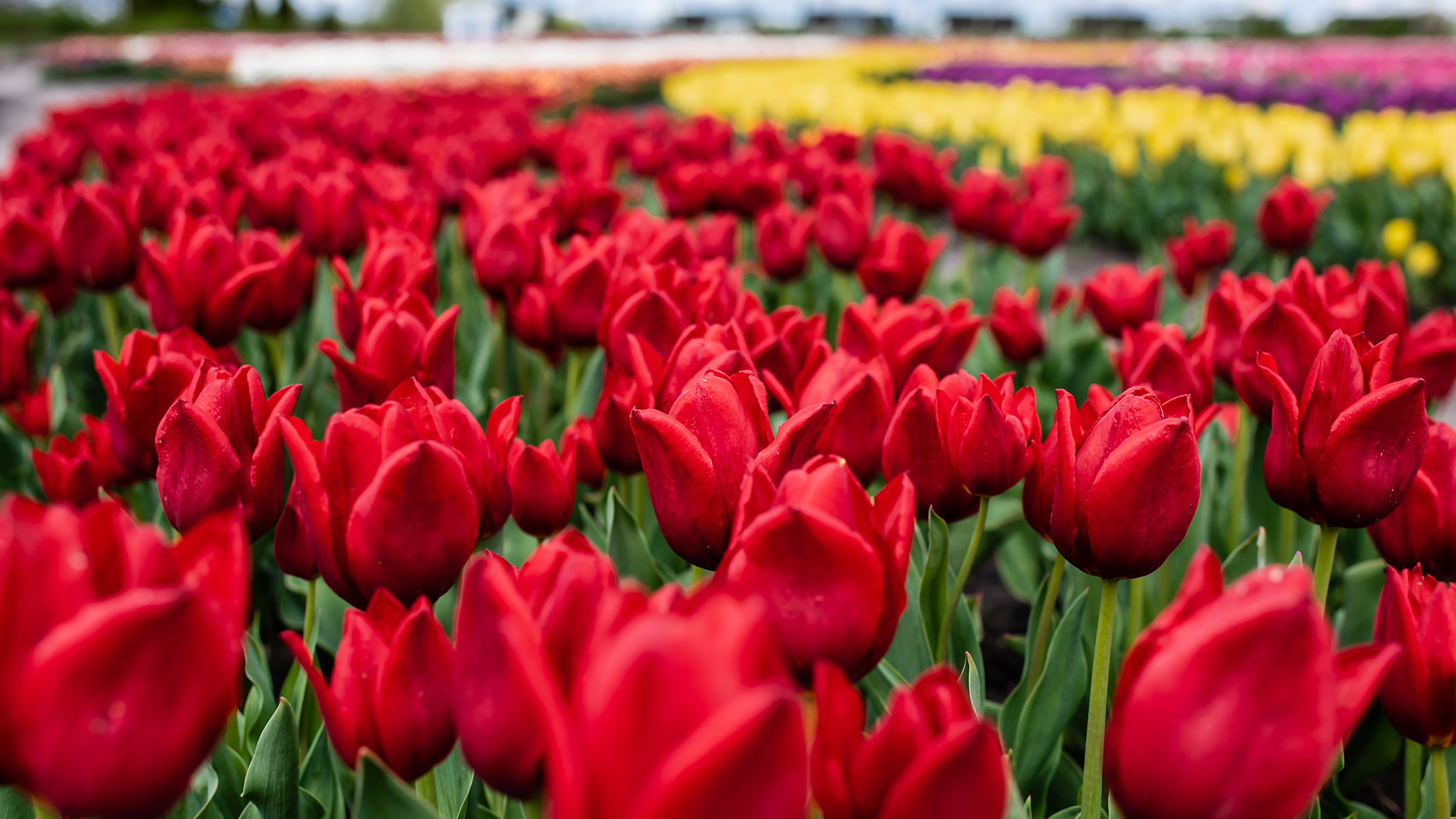

Starting in early March, dozens of large, futuristic-looking white machines started slowly trolling through farmland in The Netherlands. At first glance, the machines look like a cross between a tractor and World War I-era track-based tank, albeit with a distinctly shiny sci-fi shimmer. The machines are actually fully autonomous, AI enabled agriculture robots tasked with spotting and eliminating diseased tulip bulbs ahead of the country’s iconic and financially significant Spring tulip bloom. The Dutch-made robot is just one of many new autonomous tools quickly making their way onto farms and ranches around the world.
How does the robot spot infected tulips?
The tulip-spotting robot, designed by the Netherlands based company H2L Robotics, is officially called “Selector180.” Weighing in at roughly 2,600 pounds, the Selector uses GPS coordinates to autonomously drive through tulip fields and onboard cameras to take thousands of photos. An AI model then combs through those images looking for signs of potentially diseased bulbs which often are identifiable by distinctive red stripes on the bulb’s leaves. The Selector machine then picks out the diseased bulbs and separates them from the others to prevent the disease from spreading. H2L describes the machine as the “world’s first autonomous tulip selection robot.” A video below shows the Selector in action sorting through a row of bulbs.

Speaking with PopSci, H2L Robotics Managing Director Erik de Jong said the Selector’s AI models were trained using the wisdoms of specialized tulip farmers, referred to in the industry as “sickness’s spotter” who previously performed the laborious inspections by hand. H2L would show these spotters images of firms and they would point out bulbs with signs of thes virus. Those observations in turn helped train the model powering the Selector. As more farmers participated, Selector’s ability to accurately spot the virus improved. The machine, dr Jong said, benefited from a “wisdom of crowds.”
Machines like H2L’s will become increasingly important in the coming years, de Jong added, because now aging human sports are “basically becoming extinct.”
“Typically these are old guys that have been doing it [spotting sick tulips] for decades,” de Jong said. “There just are not that many of them any more so it is becoming a real problem.”
Around a million winter-weary tourists flock to the Netherlands every year to catch a glimpse of the colorful blooming tulips. The season begins in March and reaches peak bloom around the middle of April. If left unchecked, diseased tulip buds can lead to smaller and weaker bulbs. Eventually, it can even result in bulbs that are unable to flower at all.
[Related: How John Deere’s tech evolved from 19th-century plows to AI and autonomy]
For Dutch farmers, tulips aren’t just pretty to look at either. They are a big business. The Netherlands is consistently the world’s leading exporter of tulips and reportedly exported €81.9 million (or $88.78 million USD) worth of flowers to countries outside of the European Union in 2022, according to The Brussels Times. Around 800 different varieties of tulips are planted and can bloom in vibrant reds, oranges, and yellow rows. The rows of colorful fields are massive and can even be observed from NASA satellites in space.
H2L robotics was founded in 2019 and shipped its first robot to farmers in February 2021. Prior to the Selector’s introduction, virus identification was reportedly carried out by human “sickness spotters.” The robots, which reportedly cost around $200,000 each, can work long hours without rest and potentially cover more area faster than a human counterpart. As of writing, H2L has sold 62 Selector machines, 55 of which are currently operational.
“We’ve always sold these machines with the promise that it will be approximately the performance of a human,” de Jong said. “We’ve never tried to oversell it.”
AI tools are helping farmer increases harvest yields and explore sustainability
Farmers and agricultural startups worldwide have been exploring computer vision and machine learning algorithms to improve harvests and lower costs long before generative AI tools like ChatGPT and DALL-E were household names. In addition to autonomous robots, large-scale farmers are increasingly leaning on a combination of drones, satellite imagery, and remote sensors to aid in detecting diseases or potentially dangerous chemicals. Elsewhere, farmers are using AI to comb through weather and other environmental data in an effort to promote more sustainable farming methods and optimize planting schedules. de Jong, from H2L Robotics, says systems similar to the Selector robot could one day be used to detect sickness or anomalies in other crops like potatoes or onions.
But robots like the kinds deployed in Dutch tulip fields aren’t a silver bullet for all farmers, at least not yet. Autonomous technology and AI solutions require strong wireless internet connectivity and large databases of reliable trading data, both of which may be in short supply in developing countries. Even where wireless capabilities are available, some of the most appealing autonomous solutions like self-driving tractors require building up new infrastructure for charging which isn’t easily retrofitted onto existing farm land. Certain fruits and vegetables are also too delicate to be harvested by any machines and still require labor intensive hand picking. And even when most of those barriers are overcome it may take time and more real-world data to truly understand whether or not the upfront cost of automation actually ends up being net profitable for farmers.
